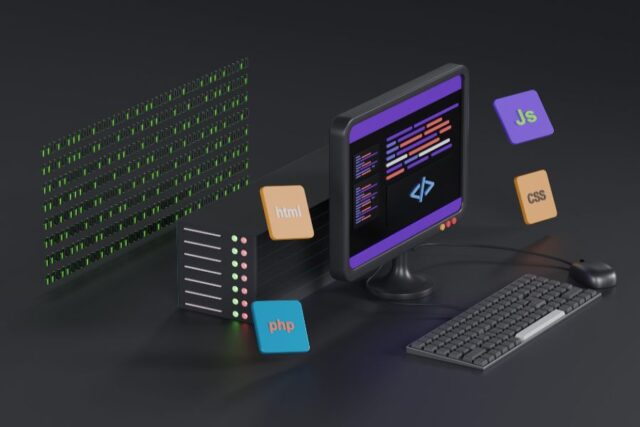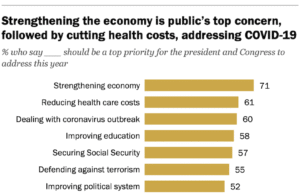To thrive, businesses must continually adapt to changing circumstances. Businesses increasingly use chatbots to answer questions, facilitate better communication, and even perform remote troubleshooting to serve their customers better. In this article, we will discuss what is chatbot app development and the step-by-step process to make a chatbot in 2023-2024 (based on time-proven Topfligt research).
Covering The Basics Of Chatbot Building
This section covers the basic introduction to custom chatbot development methodology:
What is a chatbot?
A chatbot is a computer program or application that uses text or speech to imitate human-like conversations with users. Artificial intelligence (AI) and natural language processing (NLP) technologies enable these virtual assistants to interpret and reply to user questions conversationally. Chatbots can do everything from answering client questions to automating activities and providing engaging experiences.
How do chatbots work?
Chatbots work by assessing user input and responding appropriately. They process and understand text or voice commands using machine-learning techniques. A user interface, natural language processing module, and knowledge base are among the key components of this process. Chatbots can follow predefined rules or use more complex AI-based learning to improve over time by learning from previous interactions.
Tech Stack required for chatbots
Creating a chatbot necessitates the use of a certain technology stack. Basic chatbots require programming languages such as Python or JavaScript. TensorFlow, PyTorch, and Dialogflow are popular libraries and frameworks for more advanced AI-driven chatbots. Cloud computing technologies such as AWS, Azure, and Google Cloud simplify chatbot implementation and hosting. SQL and NoSQL databases are required for storing information and user data.
Technical skills developers should have to develop chatbots
Creating chatbots necessitates a set of technical abilities. Perfect command of programming languages such as Python, JavaScript, or Ruby is essential. Expertise in artificial intelligence (AI) frameworks and knowledge of natural language processing (NLP) and machine learning are preferred. Deployment benefits from understanding cloud services and serverless architecture. The ability to solve complex problems and keep up with rapidly developing technologies are also highly prized qualities in chatbot developers.
Types of chatbots
To create a chatbot, first identify the type of chatbot you need to create. Chatbots are of two types:
Rule-based chatbots
These chatbots abide by a set of rules and decision trees programmed in advance. They respond to fixed instructions, making them ideal for simple and structured activities. Rule-based chatbots thrive in providing consistent and accurate responses for tasks such as answering FAQs and gathering user information.
ML-based chat-bots
Machine Learning chatbots, often known as AI chatbots, are more adaptable and versatile. They use natural language processing (NLP) and machine learning techniques to understand user interactions and provide responses. These chatbots constantly learn and improve their responses, making them ideal for complicated and dynamic discussions like virtual customer care or interactive applications.
Use cases of chatbots
Before you opt to build a chatbot, it’s important to understand its use cases in various industries:
Health care support
Chatbots are used to engage patients, schedule appointments, check symptoms, and send prescription reminders. They provide up-to-date health information and can even help with mental health care.
Online shopping
Chatbots improve the e-commerce experience by making product recommendations, assisting with order tracking, responding to product inquiries, and expediting purchasing. They frequently serve as virtual shopping assistants.
CRM
Chatbots in CRM systems automate client interactions, manage queries, and provide quick answers to frequently asked consumer questions. They can also gather consumer feedback and data to provide better customer service.
Project Management
Chatbots are used to streamline project management by assisting with task assignments, tracking project progress, and delivering information and updates to team members. They promote team members’ communication and collaboration.
Guide To Make a Chatbot
Chat bot development involves the following steps:
Finding the problem
Begin by identifying the exact issue or need that your chatbot will address. Conduct extensive market research during this initial phase to understand user pain points and identify the challenges your chatbot will tackle. A well-defined problem sets the course for any chatbot project, whether it’s optimizing customer assistance or automating monotonous activities.
Gathering development team
Employ a talented and diversified development staff. Natural language processing (NLP), machine learning, software development, user interface (UI), and user experience (UX) design should all be represented in this team. Each team member brings a distinct selection of expertise to the table, ensuring that your chatbot is user-friendly.
Coming up with the prototype
Make a prototype before plunging into full-scale development. This visual representation of your chatbot’s features and design enables stakeholders to provide comments and align their expectations. A well-crafted prototype speeds up development and guarantees that your chatbot achieves design and usability goals.
Chatbot app development
This is the heart of chatbot app development. Create the code for your chatbot, integrate the chosen technology stack, and put natural language processing and machine learning algorithms into action. This phase shapes your chatbot’s features and capabilities, allowing it to do its intended activities efficiently.
Deployment/ Integration
It’s time to deploy and integrate your chatbot after you’ve finished developing it. Ensure that your chatbot is seamlessly integrated into the platforms or channels where it will operate, such as websites, messaging apps, or mobile applications. Thorough testing is required to ensure that the chatbot works as planned and provides a pleasant user experience.
Maintenance and support
To make a chatbot means an ongoing process. To keep your chatbot functional and user-friendly, you must provide ongoing maintenance and support. Regular updates improve functionality, resolve bugs, and boost the chatbot’s performance. User feedback and support are critical for gathering insights and suggesting areas for improvement, ensuring that your chatbot is responsive and flexible to changing user needs.














